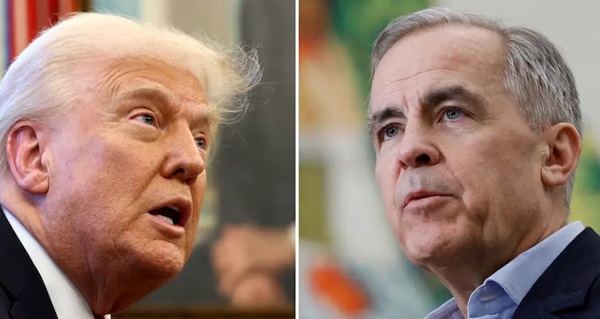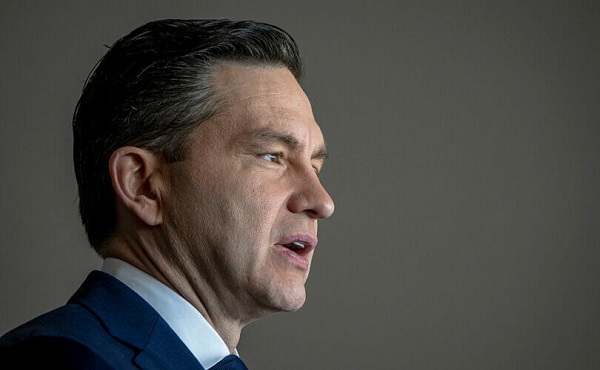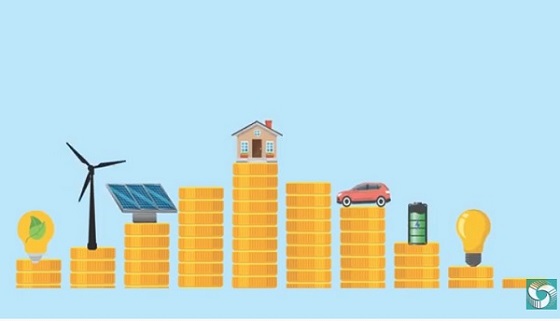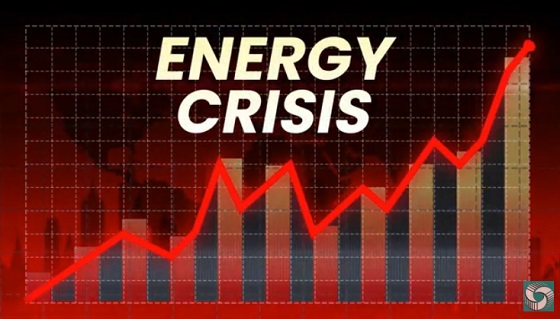Fraser Institute
Trudeau’s legacy includes larger tax burden for middle-class Canadians

From the Fraser Institute
By Jake Fuss and Grady Munro
On Monday outside Rideau Cottage in Ottawa, after Prime Minister Justin Trudeau told Canadians he plans to resign, a reporter asked Trudeau to name his greatest accomplishments. In response, among other things, Trudeau said his government “reduced” taxes for the “middle class.” But this claim doesn’t withstand scrutiny.
After taking office in 2015, the Trudeau government reduced the second-lowest personal income tax rate from 22.0 per cent to 20.5 per cent—a change that was explicitly sold by Trudeau as a tax cut for the middle class. However, this change ultimately didn’t lower the amount of taxes paid by middle-class Canadians. Why?
Because the government simultaneously eliminated several tax credits—which are intended to reduce the amount of income taxes owed—including income splitting, the children’s fitness credit, children’s arts tax credit, and public transit tax credits. By eliminating these tax credits, the government helped simplify the tax system, which is a good thing, but it also raised the amount families pay in income taxes.
Consequently, most middle-income families now pay higher taxes. Specifically, a 2022 study published by the Fraser Institute found that nearly nine in 10 (86 per cent) middle-income families (earning household incomes between $84,625 and $118,007) experienced an increase in their federal personal income taxes as a result of the Trudeau government’s tax changes.
The study also found that other income groups experienced tax increases. Nearly three-quarters (73 per cent) of families with a household income between $54,495 and $84,624 paid higher taxes as a result of the tax changes. And across all income groups, 61 per cent of Canadian families faced higher personal income taxes than they did in 2015.
The Trudeau government also introduced a new top tax bracket on income over $200,000—which raised the top federal personal income tax rate from 29 per cent to 33 per cent—and other tax changes that increased the tax burden on Canadians including the recent capital gains tax hike. Prior to this hike, investors who sold capital assets (stocks, second homes, cottages, etc.) paid taxes on 50 per cent of the gain. Last year, the Trudeau government increased that share to 66.7 per cent for individual capital gains above $250,000 and all capital gains for corporations and trusts.
According to the Trudeau government, this change will only impact the “wealthiest” Canadians, but in fact it will impact many middle-class Canadians. For example, in 2018, half of all taxpayers who claimed more than $250,000 of capital gains in a year earned less than $117,592 in normal income. These include Canadians with modest annual incomes who own businesses, second homes or stocks, and who may choose to sell those assets once or infrequently in their lifetimes (when they retire, for example). These Canadians will feel the real-world effects of Trudeau’s capital gains tax hike.
While reflecting on his tenure, Prime Minister Trudeau said he was proud that his government reduced taxes for middle-class Canadians. In reality, taxes for middle-class families have increased since he took office. That’s a major part of his legacy as prime minister.
Alberta
CPP another example of Albertans’ outsized contribution to Canada

From the Fraser Institute
By Tegan Hill
Amid the economic uncertainty fuelled by Trump’s trade war, its perhaps more important than ever to understand Alberta’s crucial role in the federation and its outsized contribution to programs such as the Canada Pension Plan (CPP).
From 1981 to 2022, Albertan’s net contribution to the CPP—meaning the amount Albertans paid into the program over and above what retirees in Alberta received in CPP payments—was $53.6 billion. In 2022 (the latest year of available data), Albertans’ net contribution to the CPP was $3.0 billion.
During that same period (1981 to 2022), British Columbia was the only other province where residents paid more into the CPP than retirees received in benefits—and Alberta’s contribution was six times greater than B.C.’s contribution. Put differently, residents in seven out of the nine provinces that participate in the CPP (Quebec has its own plan) receive more back in benefits than they contribute to the program.
Albertans pay an outsized contribution to federal and national programs, including the CPP because of the province’s relatively high rates of employment, higher average incomes and younger population (i.e. more workers pay into the CPP and less retirees take from it).
Put simply, Albertan workers have been helping fund the retirement of Canadians from coast to coast for decades, and without Alberta, the CPP would look much different.
How different?
If Alberta withdrew from the CPP and established its own standalone provincial pension plan, Alberta workers would receive the same retirement benefits but at a lower cost (i.e. lower CPP contribution rate deducted from our paycheques) than other Canadians, while the contribution rate—essentially the CPP tax rate—to fund the program would likely need to increase for the rest of the country to maintain the same benefits.
And given current demographic projections, immigration patterns and Alberta’s long history of leading the provinces in economic growth, Albertan workers will likely continue to pay more into the CPP than Albertan retirees get back from it.
Therefore, considering Alberta’s crucial role in national programs, the next federal government—whoever that may be—should undo and prevent policies that negatively impact the province and Albertans ability to contribute to Canada. Think of Bill C-69 (which imposes complex, uncertain and onerous review requirements on major energy projects), Bill C-48 (which bans large oil tankers off B.C.’s northern coast and limits access to Asian markets), an arbitrary cap on oil and gas emissions, numerous other “net-zero” targets, and so on.
Canada faces serious economic challenges, including a trade war with the United States. In times like this, it’s important to remember Alberta’s crucial role in the federation and the outsized contributions of Alberta workers to the wellbeing of Canadians across the country.
2025 Federal Election
Homebuilding in Canada stalls despite population explosion

From the Fraser Institute
By Austin Thompson and Steven Globerman
Between 1972 and 2019, Canada’s population increased by 1.8 residents for every new housing unit started compared to 3.9 new residents in 2024. In other words, Canada must now house more than twice as many new residents per new housing unit as it did during the five decades prior to the pandemic
In many parts of Canada, the housing affordability crisis continues with no end in sight. And many Canadians, priced out of the housing market or struggling to afford rent increases, are left wondering how much longer this will continue.
Simply put, too few housing units are being built for the country’s rapidly growing population, which has exploded due to record-high levels of immigration and the federal government’s residency policies.
As noted in a new study published by the Fraser Institute, the country added an all-time high 1.2 million new residents in 2023—more than double the previous record in 2019—and another 951,000 new residents in 2024. Altogether, Canada’s population has grown by about 3 million people since 2022—roughly matching the total population increase during the 1990s.
Meanwhile, homebuilding isn’t keeping up. In 2024, construction started on roughly 245,000 new housing units nationwide—down from a recent peak of 272,000 in 2021. By contrast, in the 1970s construction started on more than 240,000 housing units (on average) per year—when Canada’s population grew by approximately 280,000 people annually.
In fact, between 1972 and 2019, Canada’s population increased by 1.8 residents for every new housing unit started compared to 3.9 new residents in 2024. In other words, Canada must now house more than twice as many new residents per new housing unit as it did during the five decades prior to the pandemic. And of course, housing follows the laws of supply and demand—when a lot more prospective buyers and renters chase a limited supply of new homes, prices increase.
This key insight should guide the policy responses from all levels of government.
For example, the next federal government—whoever that may be—should avoid policies that merely fuel housing demand such as home savings accounts. And provincial governments (including in Ontario and British Columbia) should scrap any policies that discourage new housing supply such as rent controls, which reduce incentives to build rental housing. At the municipal level, governments across the country should ensure that permit approval timelines and building fees do not discourage builders from breaking ground. Increasing housing supply is, however, only part of the solution. The next federal government should craft immigration and residency policies so population growth doesn’t overwhelm available housing supply, driving up costs for Canadians.
It’s hard to predict how long Canada’s housing affordability crisis will last. But without more homebuilding, slower population growth, or both, there’s little reason to expect affordability woes to subside anytime soon.
-

 2025 Federal Election2 days ago
2025 Federal Election2 days agoStudy links B.C.’s drug policies to more overdoses, but researchers urge caution
-

 Business2 days ago
Business2 days agoIs Government Inflation Reporting Accurate?
-

 2025 Federal Election2 days ago
2025 Federal Election2 days agoPolls say Canadians will give Trump what he wants, a Carney victory.
-

 2025 Federal Election2 days ago
2025 Federal Election2 days agoThe Anhui Convergence: Chinese United Front Network Surfaces in Australian and Canadian Elections
-

 2025 Federal Election2 days ago
2025 Federal Election2 days agoTrump Has Driven Canadians Crazy. This Is How Crazy.
-

 2025 Federal Election2 days ago
2025 Federal Election2 days agoCarney Liberals pledge to follow ‘gender-based goals analysis’ in all government policy
-

 2025 Federal Election2 days ago
2025 Federal Election2 days agoPoilievre’s Conservatives promise to repeal policy allowing male criminals in female jails
-

 conflict1 day ago
conflict1 day agoTrump tells Zelensky: Accept peace or risk ‘losing the whole country’







